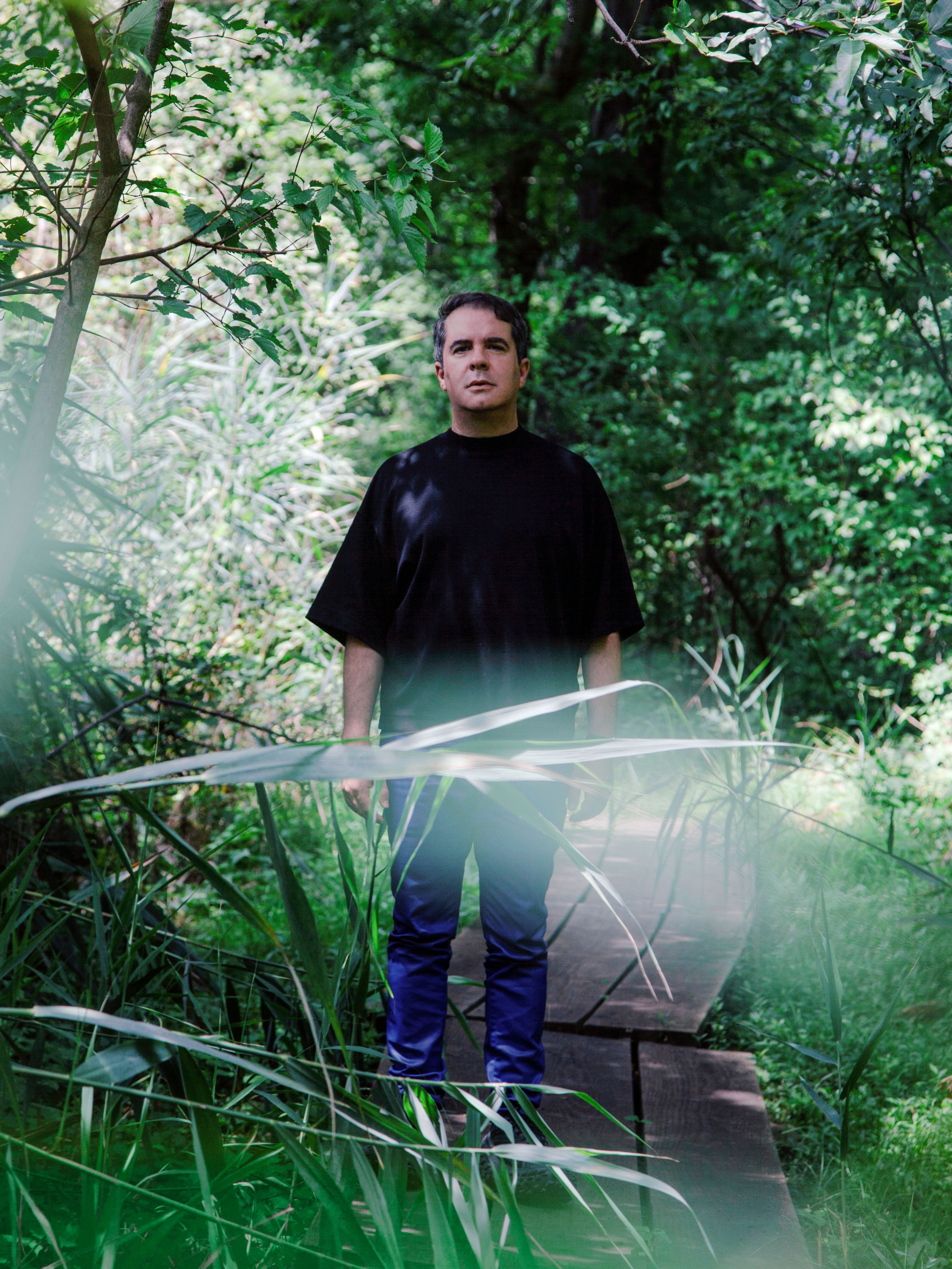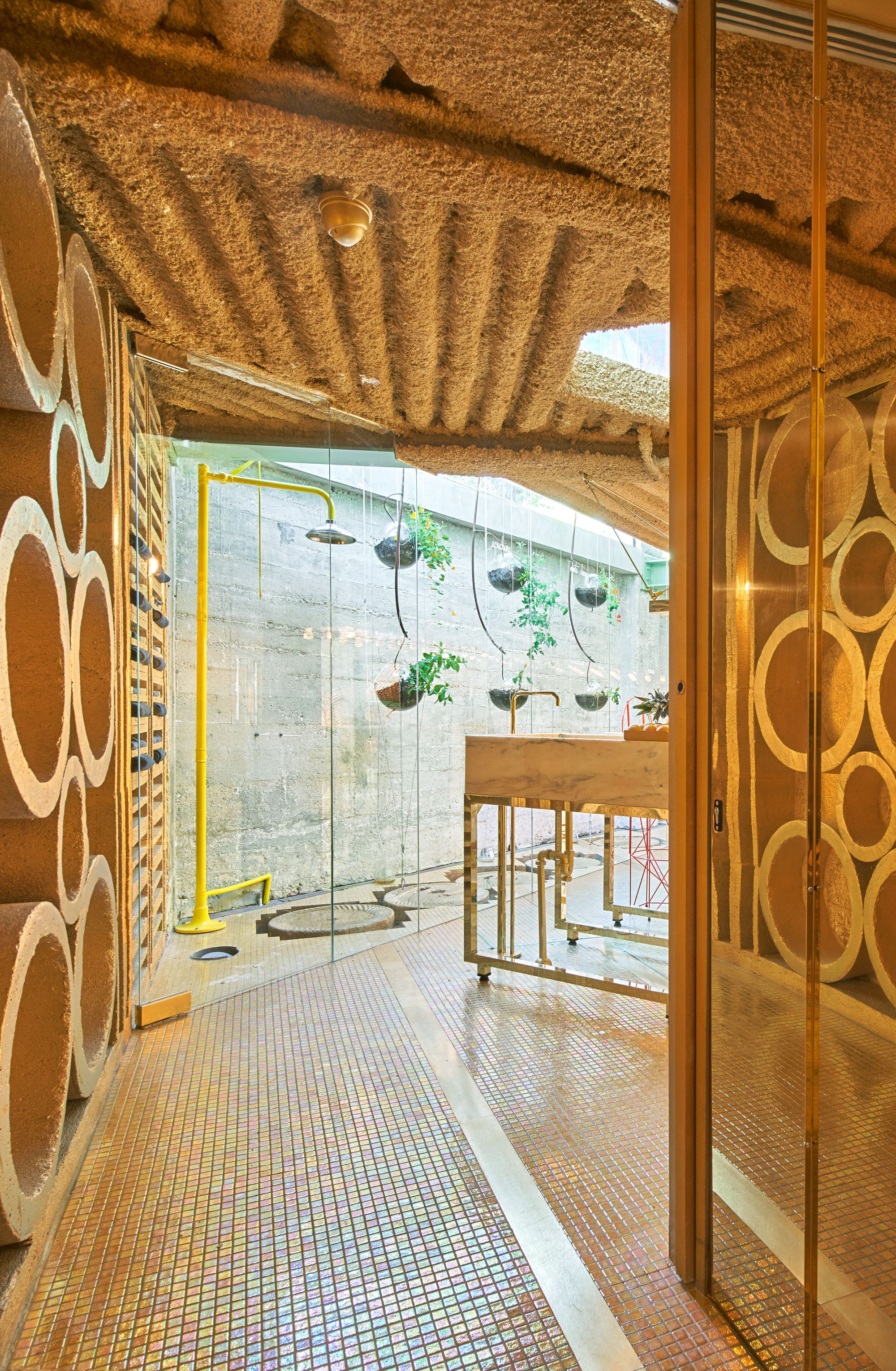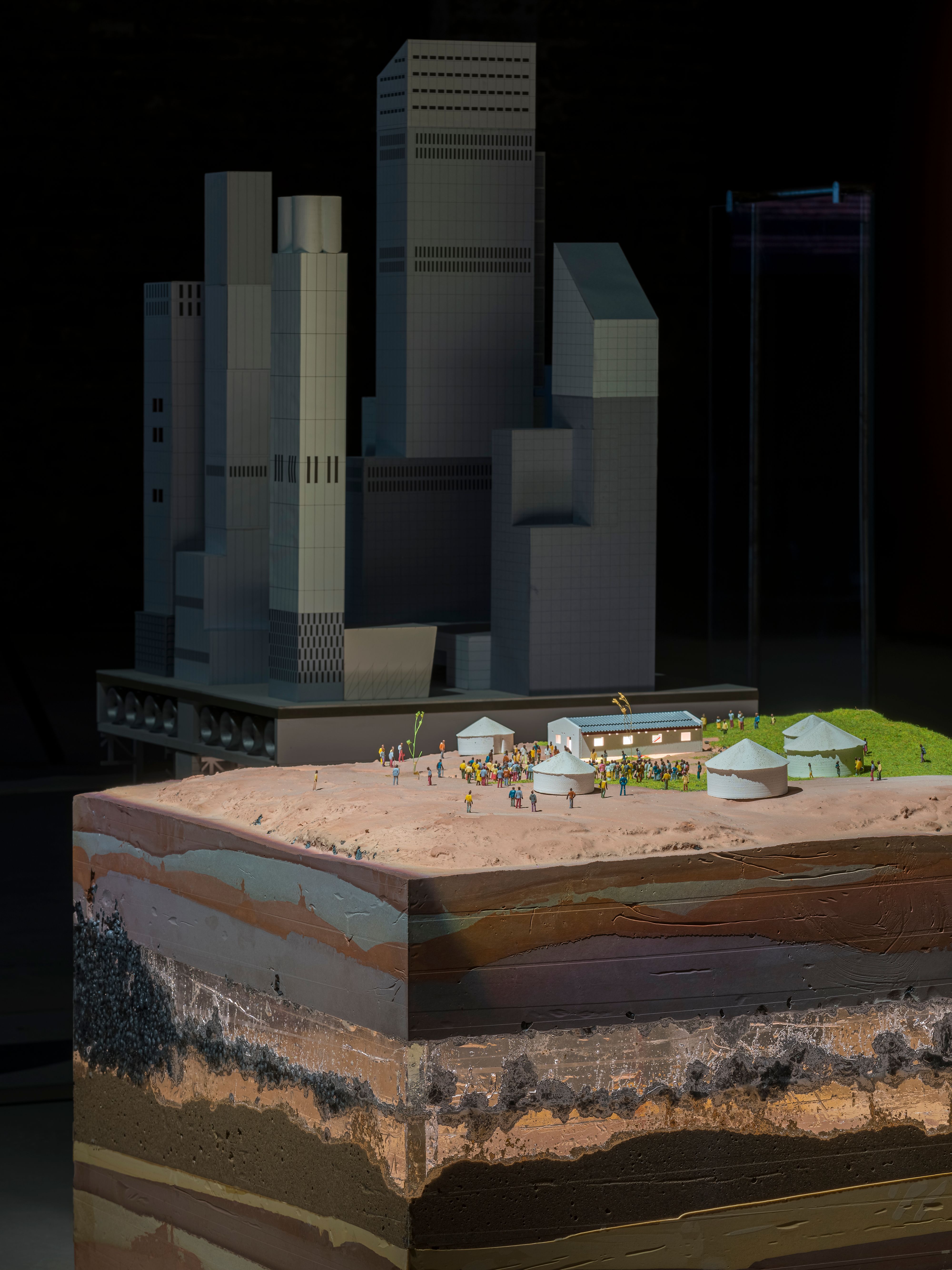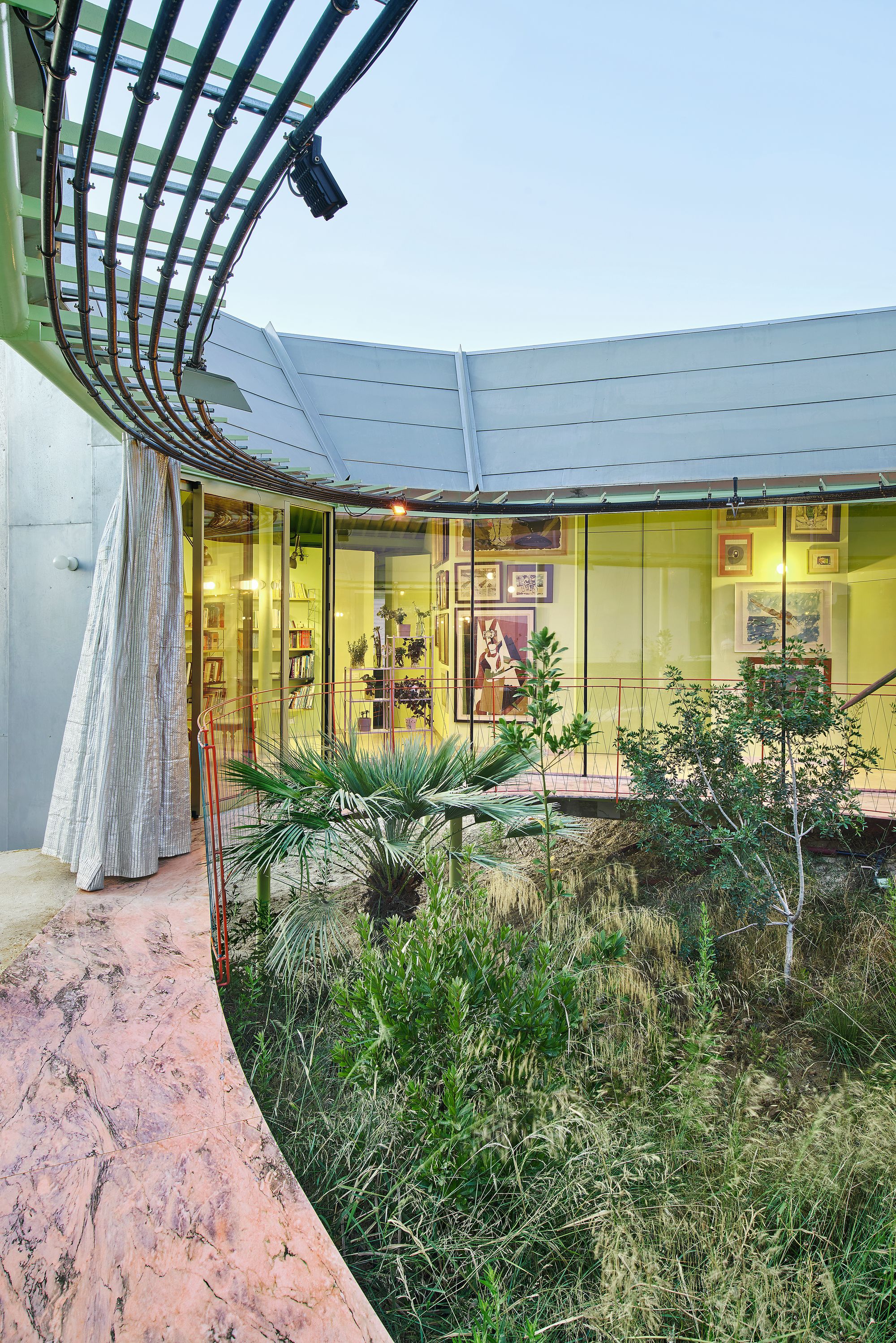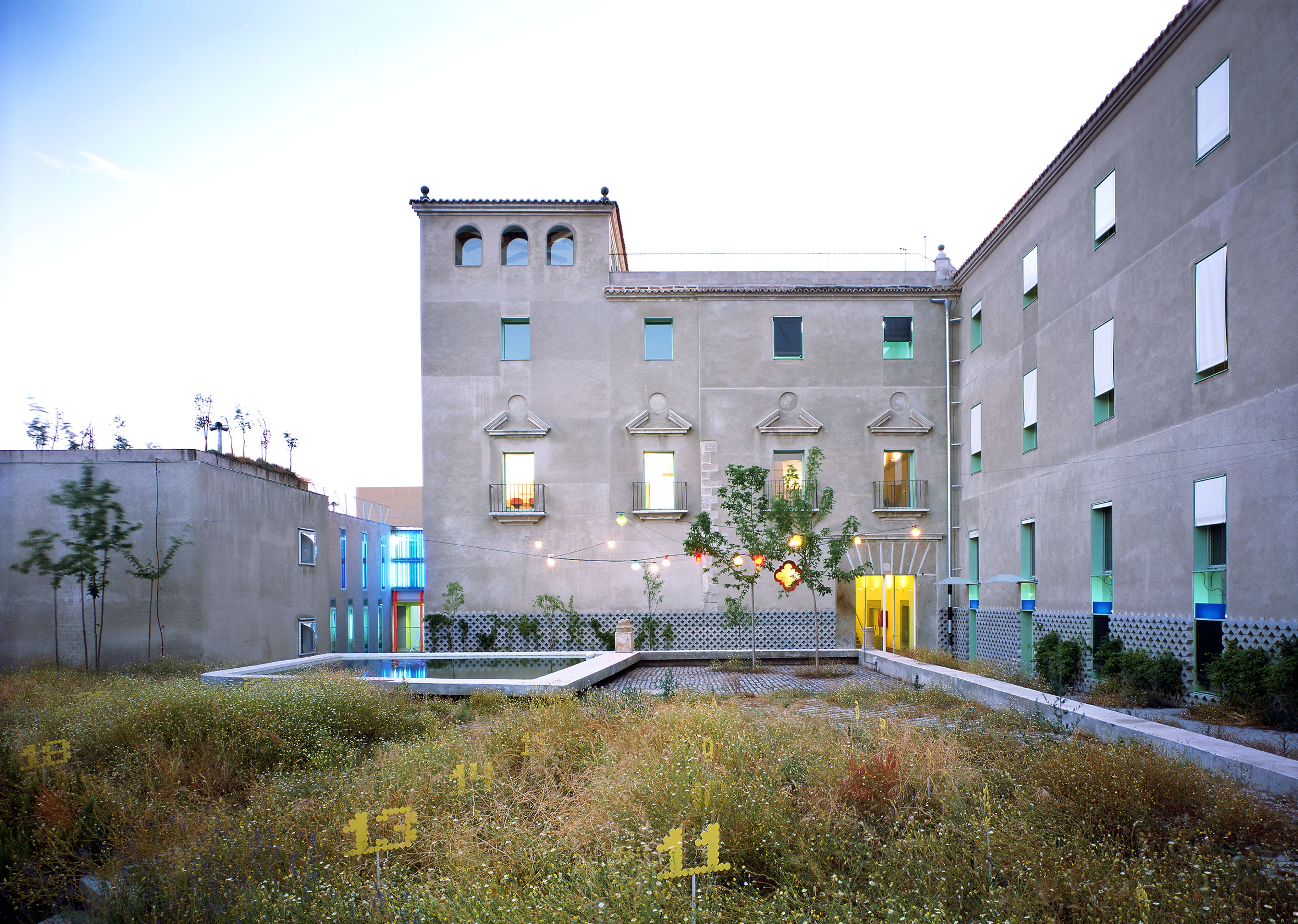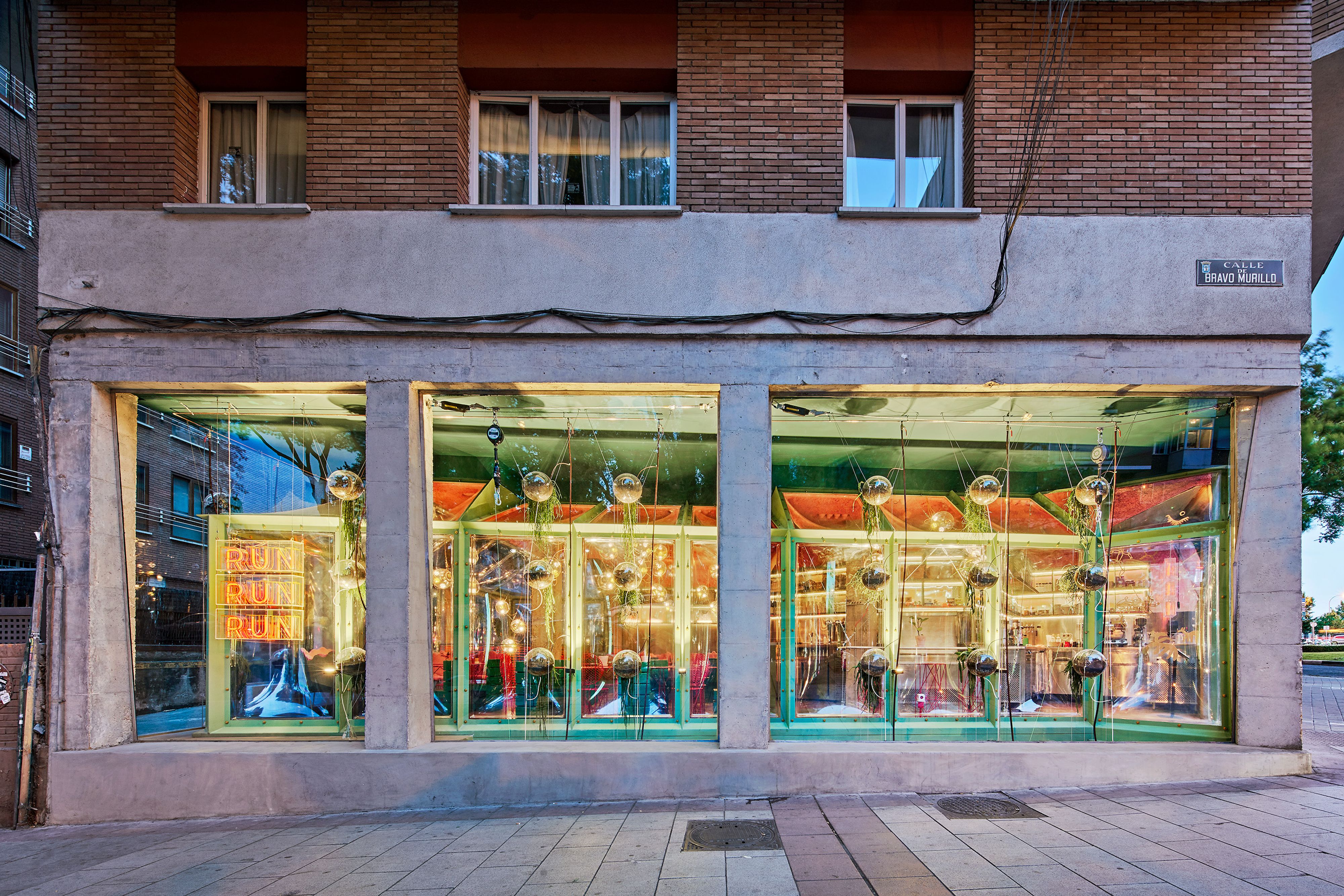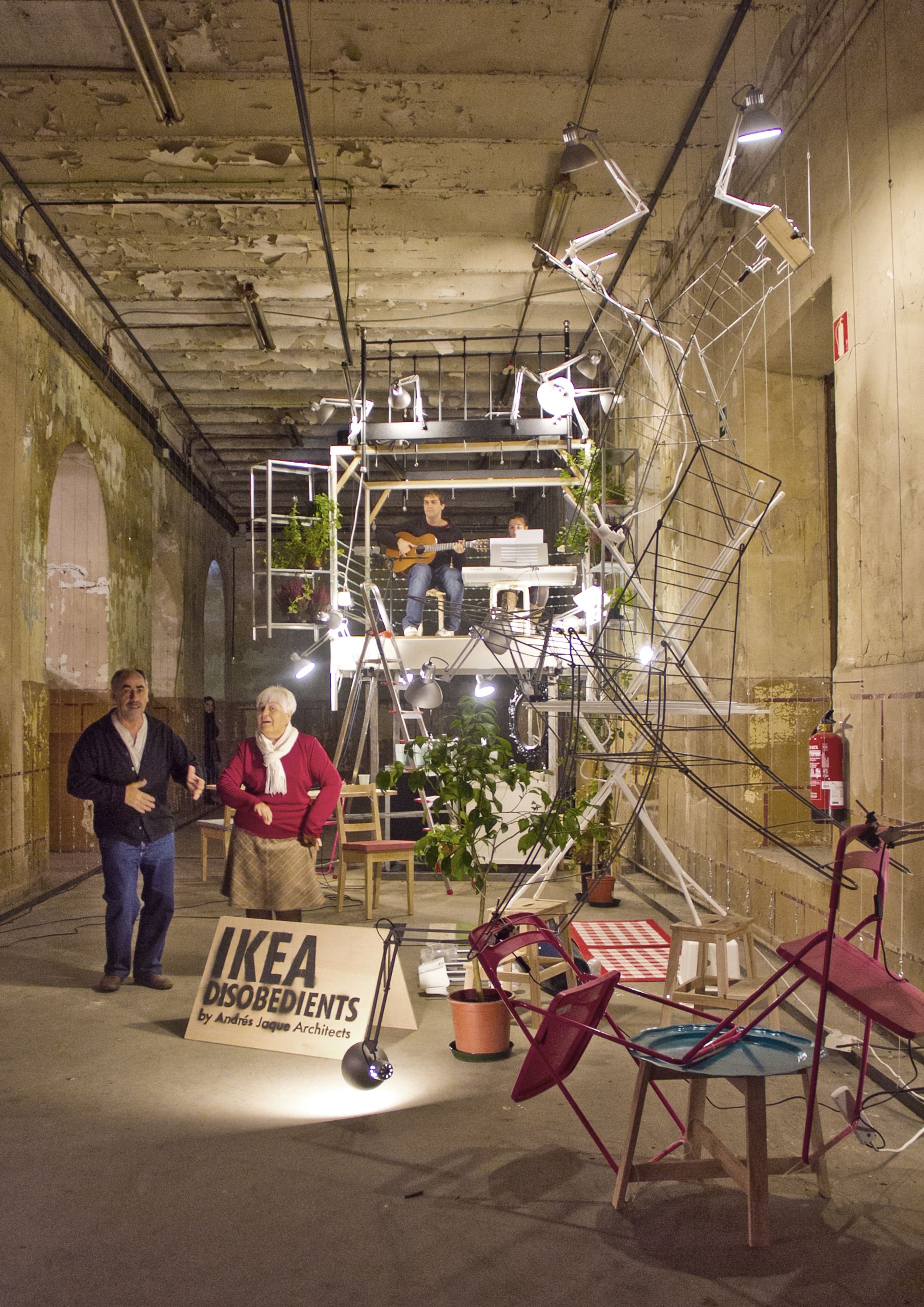Do you think being gay makes a difference?
Yes, absolutely! I’m very proud of the queer tradition. At one point I think everyone in our office was gay — we thought it was the water! [Laughs.] But that was enormously important in Spain. For instance, in the school of architecture, there were many victims of the “controls,” and many dissidents, and many of those dissidents were queer people who ended up being artists. Think of Guillermo Pérez Villalta, Sigfrido Martín Begué, people who were very important in the Movida, queer people who didn’t feel they belonged at ETSAM and weren’t given space there. I think that’s crucial to understand. I also think that the aesthetics OFFPOLINN is interested in — the love for daily life, the optimism about things that aren’t necessarily elevated — come from a camp and queer sensibility. Moreover, you should remember that I was fired from ETSAM. I taught there for seven years, then all of a sudden they didn’t renew my contract. I was told there was a long conversation that ended at 11.00 pm and that there were people who thought my ideas were dangerous. I was never told who.
What’s the biggest project you’ve worked on so far?
There are two possible answers. On the one hand, in terms of floor area, the Colegio Reggio, our project in Madrid for a school building that enables alternative teaching practices. But, on the other, the Rambla Climate House in Murcia operates at an environmental scale. There, we were trying to repair some of the wrongs inherent in the awful subdivisions that blight the outskirts of many Spanish towns by caring for the environment and using gray water to repair the classic rambla habitat. We weren’t naïve enough to think it could save the environment, but we hoped to set an example and to use the house to raise awareness. For me, just as architecture is always political, it’s also always trans-scalar. For us, doing ever bigger buildings is not really a goal — we don’t see ourselves with that kind of growth dynamic. Architecture is not about machine-like work — I think it’s much more ecological. And for that reason I believe it’s the one discipline that’s ready for the times we’re living in, because it knows how to deal with relationships. Architects may not have a lot of specific knowledge about one thing, but we know how to articulate many realities, how to assemble them, how they can become a site of activism and dissidence.
Isn’t there a danger that your organic and “non-optimized” approach — which the corporate world would label “inefficient” — might engender long, underpaid work hours?
As I said, at OFFPOLINN we deliberately don’t take on too many projects for precisely that reason. And we don’t have interns. I would say that as a profession we really need to go through a process of transformation and operate on the basis of mutual care. This is not a detail — it’s a crucial transformation, especially in a context where firms are seeing their fees constantly cut and must compete for an ever smaller piece of pie.
Is this a discussion you’re having at Columbia?
Yes, of course. At many different levels. Many of the faculty at Columbia are part of the Alternative Building Industry Collective, which is examining how buildings are made — including the labor conditions — in both the architecture and construction industries. I defend the idea that architecture is never isolated, it is in itself an articulation — you never work with anything new, you just redesign existing relationships. And when you look at these relationships, they expand in scale: you are dealing with industry practices or where materials come from, but you’re also changing the lives of kids who end up studying somewhere like the Colegio Reggio, or changing the fate of a subdivision by putting water back into the ecosystem. We’re trying to work with the whole trans-scalar extent as much as we can. I also believe that aesthetics, rhetoric, and form are extremely important, because, collectively, we need to mobilize tools of communication, of semiotics, of atmosphere, and of language in order to build up momentum, create credibility, and allow people to sense the new realities that are emerging.

